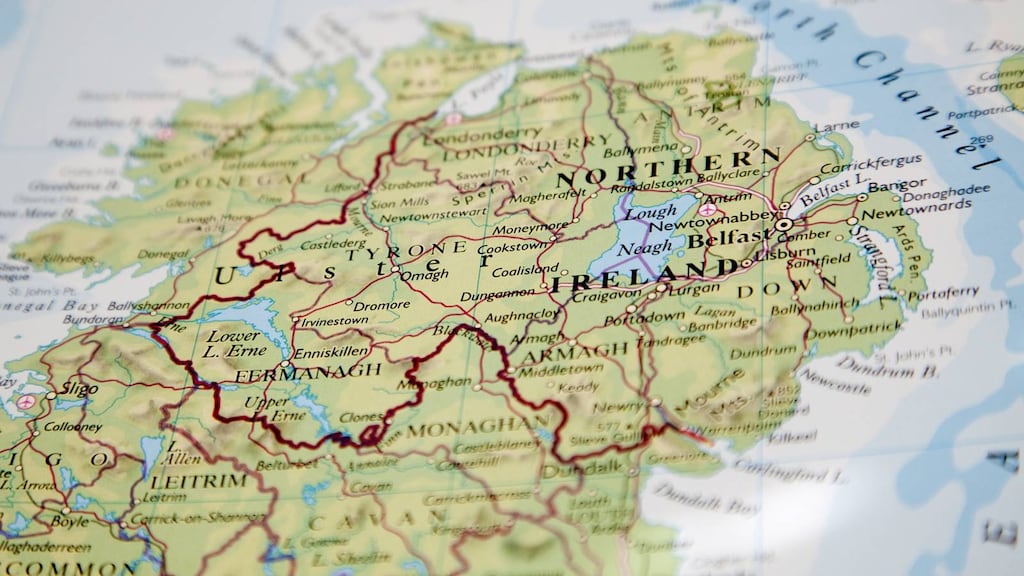The first results of this year’s North and South research, reported in The Irish Times on Friday and again on Saturday, have two important messages so far.
One: there is no sign that the test laid down in the Belfast Agreement for the UK government to call a Border poll – that a vote on Irish unity in Northern Ireland would be likely to pass – has been met. So there is no immediate prospect of a referendum and everyone – despite what they may say in public – knows it.
Two: the pro-union majority in Northern Ireland has decreased in the three years since the series began – and fast. The gap between the unionist and pro-unity sides in the North as measured by the first survey in 2022 was 21 percentage points: 50 per cent in favour of maintaining the union to 27 per cent for Irish unity. This year it is 48-34 – just 14 points.
As the Arins academics with whom The Irish Times has been fortunate to work on the project – John Garry, Brendan O’Leary, Jamie Pow and Dawn Walsh – pointed out in their analysis of the numbers yesterday, if the gap continues to close at the rate of the last three years, the pro-union majority will be gone by 2027.
READ MORE
[ Trends show rise in support for Irish unity among Northern votersOpens in new window ]
Some caveats are needed, however. The previous pro-union majority looked very big for a country that is much more evenly divided along tribal lines. The proportion of Catholics saying they would vote for a united Ireland seemed low three years ago and may now be catching up to a more natural level, as chatter and campaigning about a united Ireland grows more prevalent.
Meanwhile, the pro-union vote in the North still covers nearly half of all voters, and more among those who declare a preference. And as the professors point out, the pro-unity trends of recent years may not continue in a linear manner. More research over the coming years will tell us a lot.
Still, if you were a unionist, you would look at these numbers and start asking yourself some questions, wouldn’t you?
But there’s questions too for the large pro-unity majority in the South.
The North and South series was conceived as an attempt to provide unbiased and reliable information on the state of public opinion in the two jurisdictions on the constitutional question and related issues. It is not an attempt to provide ammunition, solace or encouragement to any side of the argument. It is an attempt to root the argument in facts.
So it is not to either damage or promote the cause of a united Ireland to say that the sort of unity entertained by many people in the South is pretty myopic if the aim is not just to achieve a united Ireland but to make a success of it.
The South has no hesitation saying yes to unity – but on our terms. As long as it doesn’t cost any money. Oh, and maybe not with a different flag or anthem or constitution or political arrangements or membership of the Commonwealth or Nato or anything at all that might involve changing the Republic that we have built in order to accommodate unionists.
In the South, one of the recurring themes was: why should we change?
The shorthand for a united Ireland that is more accommodating of unionists is creating a new Ireland that is more British than the current State. It would recognise the British identity of a substantial chunk of its population; it would recognise (as the new Northern state certainly did not do for its nationalist citizens a century ago) the legitimacy of that identity and honour it in its symbols and iconography, its flags and its anthem(s). It would recognise British identity in its constitutional and political arrangements and include it in its national expression.
Don’t like the sound of any of that? Don’t fancy a State that’s a bit more British? Figure that we fought a war to get rid of the British (two wars, the Provisional IRA might say) and to hell with the idea of changing the Irish identity of the Republic in order to accommodate unionists? That unionists can like it or lump it and if they don’t like it, well, they know where the door is?
You’re not alone. A lot of your compatriots feel the same way.
In the first year of this project, in 2022, Ipsos hosted focus groups discussions in Northern Ireland the Republic to get further perspectives on the views of voters. In the South, one of the recurring themes was: why should we change?
“Across the groups,” Ipsos reported, “there tended to be an assumption that any reunification would be an assimilation of sorts – particularly in relation to the identity of the reunified country ... References to changes in national anthems or flags were greeted with surprise and shock.”
Said one participant: “I just figured they’d join us and that will be that.” It might be a bit more complicated than that.
True, there have been some indications in the research that southern voters might be prepared to consider changes. But an awful lot of voters are – to put it mildly – very sceptical about the necessity of making changes to accommodate unionists.
This year’s North and South results will doubtless be heralded by united Irelanders as evidence that unity is only a matter of time. Whatever about that, it should serve notice to everyone – campaigners, the Government, the public – that if a united Ireland (should it happen) is to be a success, then some thought needs to go into figuring out how it would or wouldn’t work. It’s our hope that this research can play a constructive role in that.
All the reports of our North and South research since 2022 are available on irishtimes.com
Politics Alerts
:quality(70)/cloudfront-eu-central-1.images.arcpublishing.com/irishtimes/ML3UCQJ7NFC6RPNPKVSDIBKVKI.jpeg)
Sign up for push notifications on your phone to stay connected with our Politics coverage












